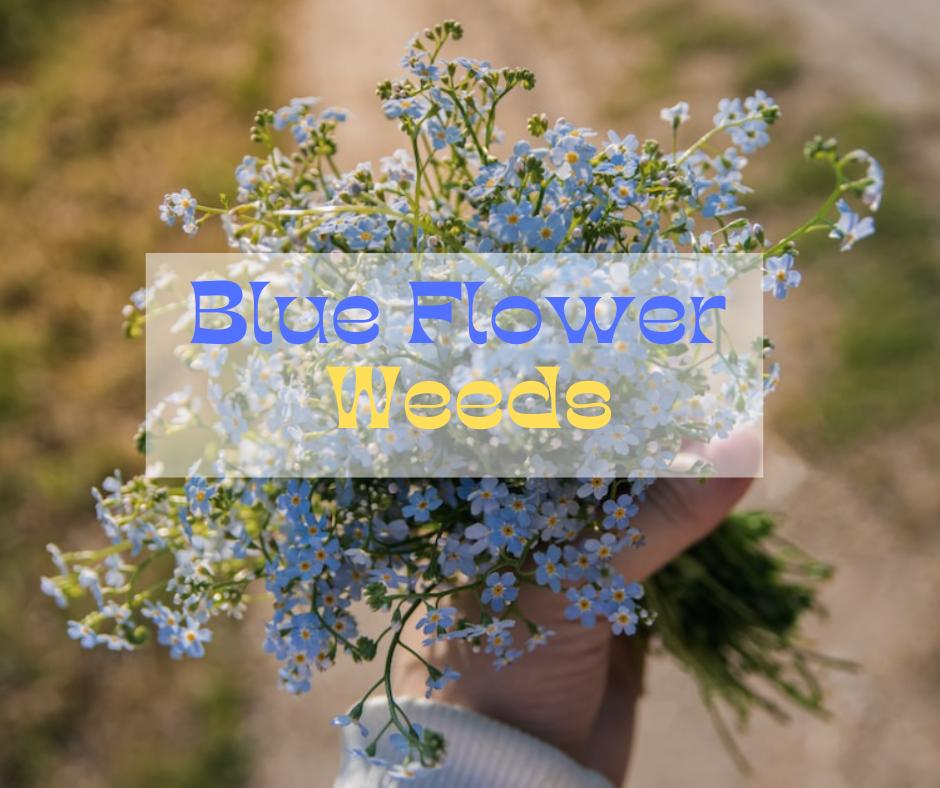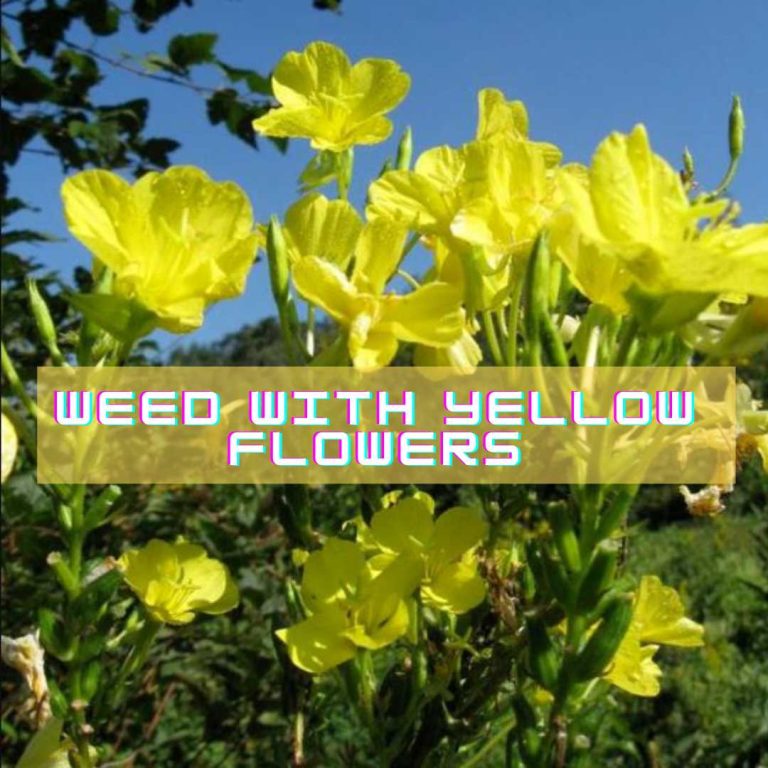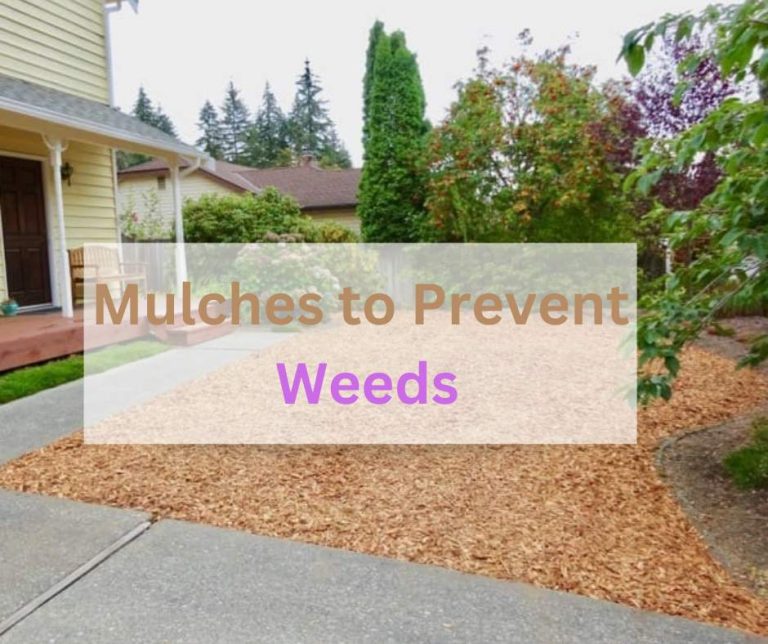12 Weeds with Blue Flowers: Identification, Control, Pros & Cons
Do you have the same problem as growing weed on your lawn and can’t identify it? This is a technical difficulty though. But some weeds growing with blue flowers can entice your garden with beauty. You become astonished to see their attractive demand in any lawn, garden, or yard.
They are not only one group of plants. These blue flower weeds have a variety of species. Every group has its own alluring enchantress.
But sometimes it becomes the main problem for any pet or cattle in your home. Cause they are mostly toxic and poisonous to animals. In this respect, you have to eradicate the plant and have to control the production of further growth.
In this article, we now converse about their nature, species, identification, pros, and cons, and controlling the growth of the weed flower for your better understanding. So, keep through it and look at the entrance.
Let’s Discuss Some of the Alluring Weeds with Blue Flowers: –
Chicory
Chicory is a tall, herbaceous plant with blue flowers. It has a long taproot, which makes it difficult to pull up. It produces a lot of seeds and therefore it can quickly spread and become a nuisance.
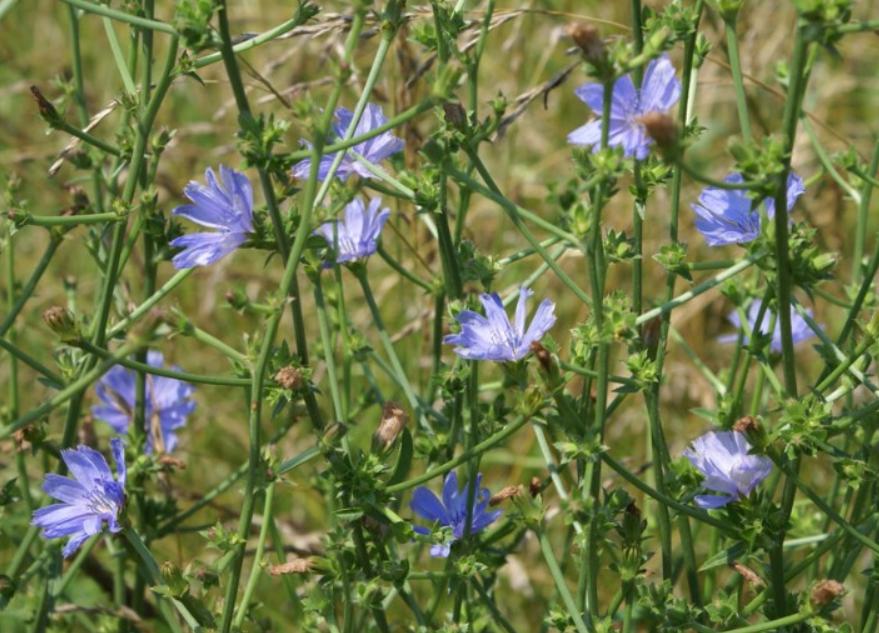
| Scientific name | Cichorium intybus |
| Family | Asteraceae |
| Native | Europe |
| Sun exposure | Full Sun |
| Bloom time | Summer, Fall |
Pros
- Chicory can be used to make coffee.
- Chicory leaves can be eaten as a vegetable.
- Chicory has medicinal properties.
Cons
- Chicory can be a nuisance weed in gardens and lawns.
- Chicory can crowd out desirable plants.
- Chicory can make it difficult to mow the lawn due to lengthy roots.
- Can be poisonous to livestock if consumed in large quantities.
How to Control
Hand pulling is an effective way to control chicory if the infestation is small. Larger infestations can be dealt with chemical herbicides. But it is important to use them carefully and only as a last resort. There are also some biological controls that can be used to control chicory, such as the chicory leaf beetle (Galerucella pusilla).
Cornflower
This plant is native to Europe and is commonly known as the “bachelor’s button”. This shrub is now naturalized throughout the world and growing as a flowering plant. It grows up to 80cm long and blooms between June and August.
This garden flower is mostly seen on wasteland and roadside fields but is now considered a garden escapee. It can easily be widespread but rarely found.
| Scientific name | Centaurea cyanus |
| Family | Asteraceae |
| Native | Europe and Asia |
| Sun exposure | Full Sun |
| Bloom time | Late Spring, Early Summer |
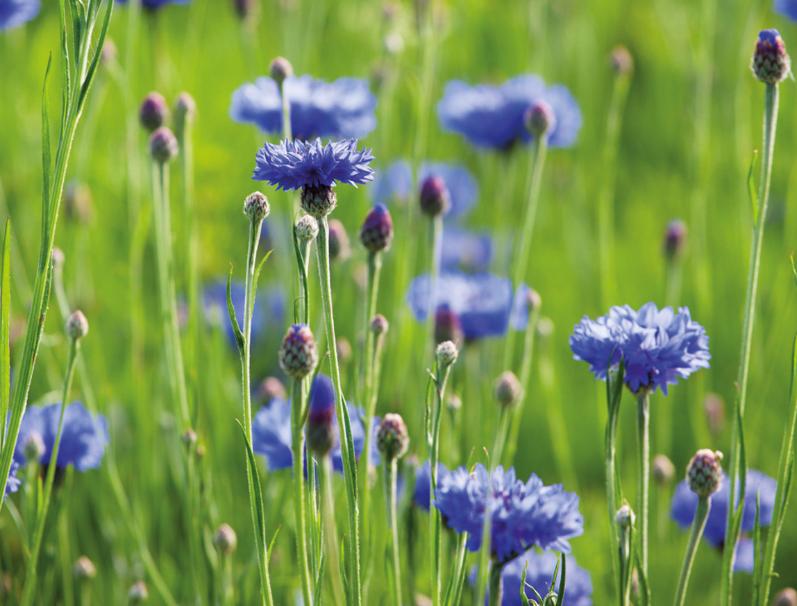
Pros
- Cornflower is an exquisite flower that can be used in bouquets or as an ornamental plant in the garden.
- It can be used for garnishing salads.
- Cornflower has medicinal properties and has been used to treat a variety of ailments, including fever, stomachache, and liver problems.
Cons
- Cornflower can be a nuisance weed in gardens and fields.
- Although cornflowers aren’t often thought of as invasive, they can self-seed and spread quickly under certain circumstances, which could provide management problems.
- Cornflowers can crowd out desirable plants.
- Livestock can be harmed if this flower is eaten in large amounts.
How to Control
Hand pulling is an effective way to control cornflowers if the infestation is small. For large infestations, it is important to use them carefully and only as a last resort. There are also some biological controls that can be used to control cornflowers, such as the cornflower seed weevil (Apion ulicis). It is better to remove them before any growth of seed or flower. It needs to be disposed of in such a way that the seeds do not spread anymore.
Speedwell
Speedwells are blue, white, or pink flowers on tiny, herbaceous plants. They are annuals, biennials, or perennials.
| Scientific name | Veronica spp |
| Family | Plantaginaceae |
| Native | Europe, Asia, and North America |
| Sun exposure | Full to Partial exposure |
| Bloom time | Late Spring, Early Summer |
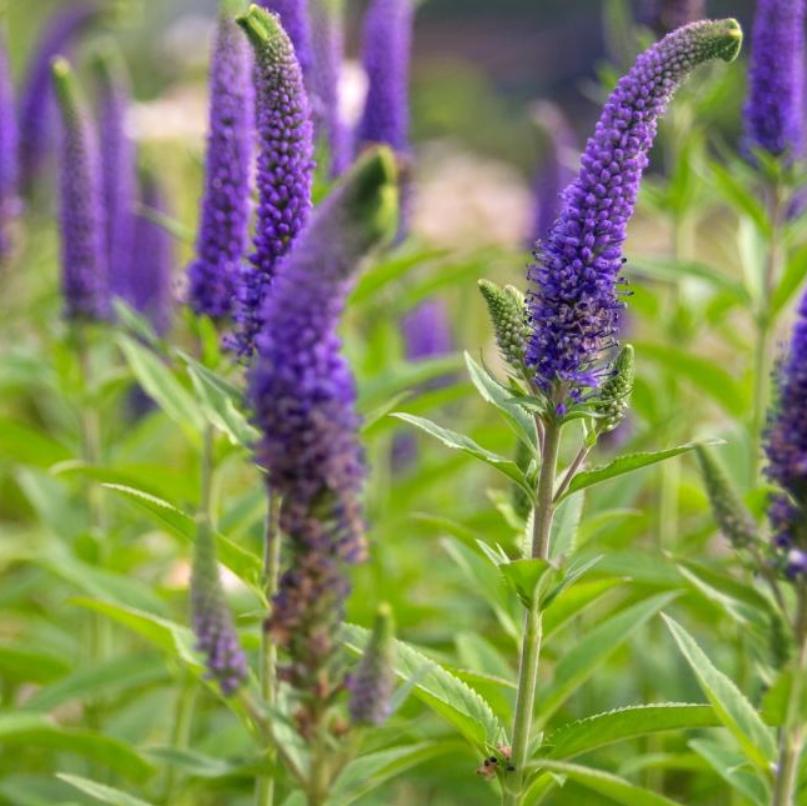
Pros
- Some speedwells are edible, such as germander speedwell (Veronica chamaedrys) and creeping speedwell (Veronica repens).
- Some speedwells have therapeutic properties, such as heath speedwell (Veronica officinalis) and germander speedwell.
- Speedwells are attractive plants that can be used in wildflower gardens and also in bouquets.
Cons
- Speedwells can be a nuisance weed in gardens and lawns.
- They can aggressively spread making it difficult for other plants to grow.
- Speedwells can make it difficult to mow the lawn due to their invasive nature.
How to Control
There are also some biological controls that can be used to control Speedwell, such as the Speedwell flea beetle (Altica lythri). Remove them early, before it has a chance to flower and spread seed. Keep your lawn mowed regularly to prevent Speedwell from setting seed. Plant ground covers or other plants that will compete with Speedwell for water and nutrients. Chemical herbicides can be used for a dense group of speedwells.
Blueweed
This is a quarantine plant, hairy, and painful to touch. It can be grown on dry lands or the roadside or even on railway sides. The flower is a funnel-shaped design and the stems are short. It can be 30-40 cm tall.
The most important thing is this plant is toxic to horses and cattle. So, be cautious when you see them in your garden or think about planting them.
| Scientific name | Echium vulgare |
| Family | Boraginaceae |
| Native | Europe |
| Sun exposure | Full Sun |
| Bloom time | Early Summer |
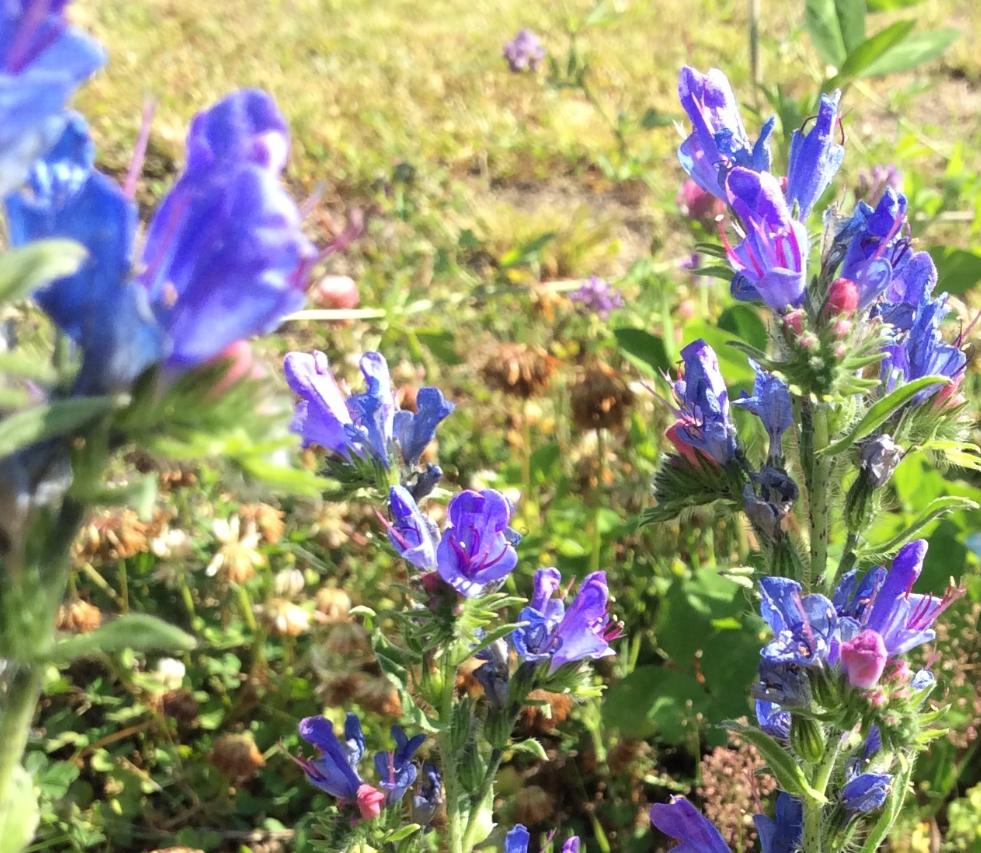
Pros
- The striking bright blue flowers of Blueweed add vibrancy to the landscape and can be added to bouquets
- The flowers attract bees, butterflies, and other pollinators, supporting local biodiversity.
- It can thrive in dry, disturbed areas, making it resilient in challenging environments.
Cons
- Blueweed is considered an invasive weed and Its rapid spread can outcompete native plants and reduce biodiversity.
- Blueweed’s invasive growth can alter the structure and function of ecosystems, affecting native flora and fauna.
- The plant contains pyrrolizidine alkaloids, which can be toxic to livestock if consumed.
How to Control
Biological controls such as the blueweed weevil (Galerucella pusilla) can be used to clear them up. By routinely examining areas and swiftly removing immature plants before they become established, you can prevent the formation of Blueweed. Herbicides can be used to remove them as well in areas where the growth is large.
Blue Mustard
Blue Mustard is an annual plant that typically grows up to 30-60 centimeters in height and produces small blue to purple flowers. It is commonly found in dry, disturbed areas, fallow fields, and along roadsides.
| Scientific name | Chorispora tenella |
| Family | Brassicaceae |
| Native | Central Asia |
| Sun exposure | Full sun but can tolerate some light shade |
| Bloom time | Spring |
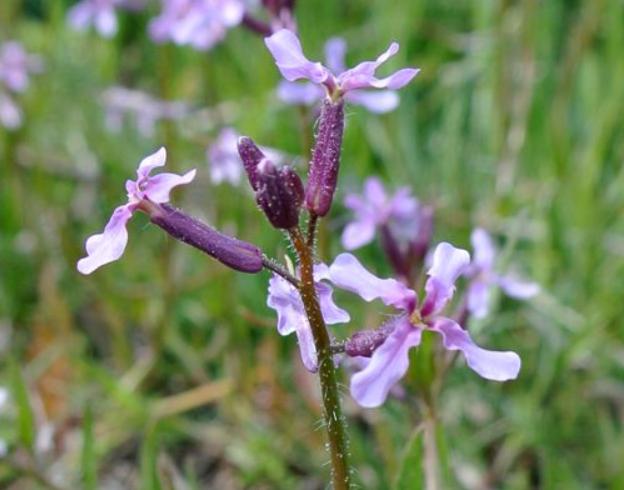
Pros
- The small, stunning blue-to-purple flowers of Blue Mustard can add aesthetic to landscapes.
- It can survive in challenging conditions like dry weather.
Cons
- Blue Mustard can quickly establish and spread.
- The invasive expansion of blue mustard can outcompete native plant species, lowering biodiversity.
How to Control
There are also some biological controls that can be used to control blue mustard, such as the blue mustard beetle (Phaedon cochleariae). Promptly remove young plants regularly. For small infestations, hand-pull Blue Mustard plants, making sure to remove the entire root system to prevent regrowth. Selective herbicides that target annual broadleaf weeds can be utilized for greater infestations.
Forget-Me-Not
Forget-Me-Not plants are annuals or biennials plants. They are five-petaled flowers, which can be blue, pink, white, or purple, depending on the species. They typically grow in moist, shady areas such as woodland edges, meadows, and along stream banks.
| Scientific name | Myosotis spp |
| Family | Boraginaceae |
| Native | Europe, Asia, and North America (California, New York, Oregon, Vermont, Colorado, Idaho) |
| Sun exposure | Partial to Full Sun |
| Bloom time | Spring |
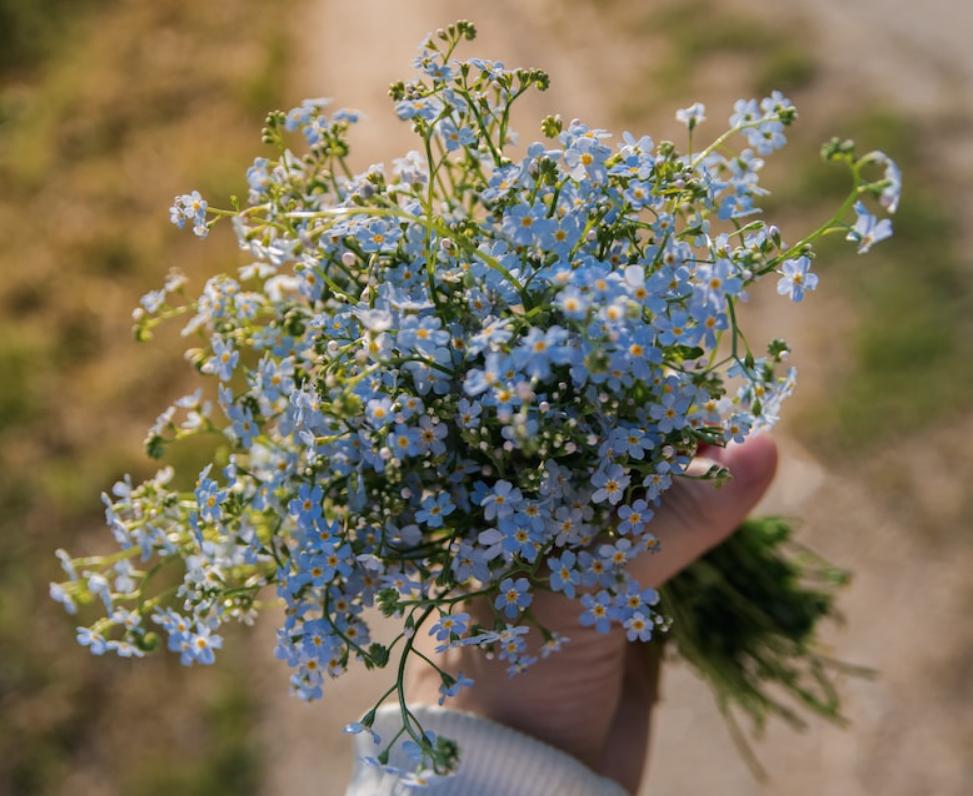
Pros
- Forget-Me-Not flowers are charming, making them popular choices in gardens and floral jewelry.
- The flowers of Forget-Me-Not attract bees and butterflies, contributing to biodiversity and supporting pollination.
- It is well-suited for shady or partially shaded areas, adding colors to damp, dark areas.
Cons
- Forget-Me-Not plants can self-seed readily and as a result, they can overgrow in different areas.
- Forget-Me-Nots can become invasive and crowd out other plants.
- They can outgrow and hinder growth of desirable plants.
How to Control
There are also some biological controls that can be used to control forget-me-not, such as the forget-me-not weevil (Galerucella pusilla). Regularly deadhead Forget-Me-Not flowers after they wilt and before they generate seeds to stop them from self-seeding and spreading. Consider placing Forget-Me-Nots in containers or specific locations if you’re growing them in a garden to reduce their propensity to spread.
To stop the spread of forget-me-not plants in natural places, give them selective pruning or removal before they set seed.
Houndstongue
Houndstongue has bristly leaves, reddish-purple stems, and small, bell-shaped flowers that are usually reddish-purple or pink in color. The plant typically grows up to 1 meter and is commonly found in dry, disturbed areas, roadsides, pastures, and open woodlands.
| Scientific name | Cynoglossum officinale |
| Family | Boraginaceae |
| Native | Europe |
| Sun exposure | Full sun but can also tolerate partial shade |
| Bloom time | Late Spring, Early Summer |
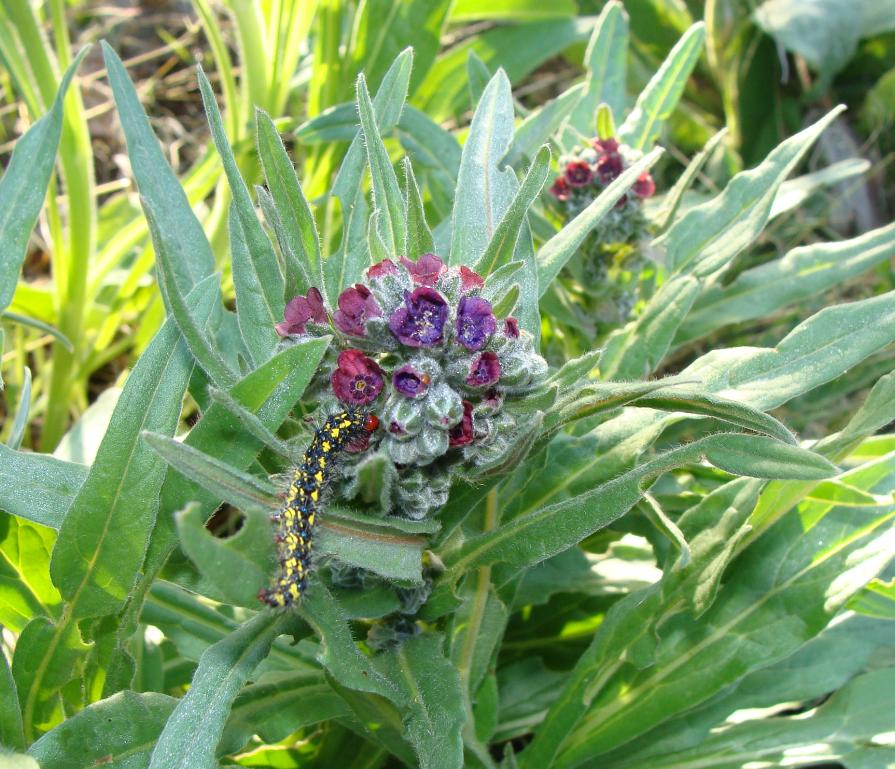
Pros
- Houndstongue has therapeutic properties to treat a variety of ailments, including stomach aches, diarrhea, and fever.
- Its dainty look attacks bees and butterflies and is a source of nectar.
Cons
- Houndstongue is classified as an invasive weed, out-competing native plant species and reducing biodiversity.
- Grazing animals may suffer from liver damage or other health issues if they consume Houndstongue.
- Houndstongue’s aggressive growth can disrupt native ecosystems.
How to Control
There are also some biological controls that can be used to control houndstongue, such as the houndstongue weevil (Otiorhynchus scaber). For small infestations, hand-pull Houndstongue plants, making sure the root is completely uprooted. For large infestations, chemical herbicides can be used. Implement revegetation and restoration projects in disturbed regions with desirable native species to help outcompete and restrain the growth of houndstooth.
Borage
Borage has hairy leaves and beautiful star-shaped, bright blue flowers. The plant typically grows up to 60-100 centimeters in height and is commonly found in gardens, cultivated fields, and open areas.
| Scientific name | Borago officinalis |
| Family | Boraginaceae |
| Native | Mediterranean region |
| Sun exposure | Full Sun |
| Bloom time | Summer |

Pros
- Borage leaves and flowers are edible and can be used in many recipes. The flowers are often used as garnishes in culinary preparations.
- Borage has medicinal properties, such as anti-inflammatory and diuretic effects.
- The attractive blue flowers of borage attract bees, butterflies, and other pollinators, supporting biodiversity and pollination.
- Borage is renowned for being a useful companion plant in gardens because it draws helpful insects and wards off some pests.
Cons
- Borage can self-seed and spread rapidly impeding the growth of other necessary plants.
- Borage is allergic to some people and can face skin irritation.
How to Control
If you want to control the mass growth of it, then the easiest way is trimming the new leaves. you can have them with cucumber salad, it brings great taste to the salad. You also can harvest the plant occasionally to control the spread of seeds. by using mulch you can prevent them from germinating.
Viper’s Bugloss
Viper’s Bugloss has bristly leaves, hairy stems, and tall spikes of bright blue to purple flowers and can grow up to 30-80 centimeters. The flowers gradually change color as they age, starting with vibrant blue and transitioning to pink and purple. It is a common weed seen mostly in gardens, fields, and roadsides.
| Scientific name | Echium plantagineum |
| Family | Boraginaceae |
| Native | Mediterranean region |
| Sun exposure | Full Sun |
| Bloom time | Late Spring, Early Summer |

Pros
- Viper’s bugloss is edible and has a peppery flavor.
- It is a source of vitamin C and potassium.
- Viper’s bugloss is a nectar source for bees and butterflies.
- They are drought tolerant.
Cons
- They are toxic to livestock.
- They have an invasive nature by which they outgrow themselves a lot.
How to Control
General Information about Viper’s Bugloss (Echium plantagineum):
Viper’s Bugloss, scientifically known as Echium plantagineum, is an annual or biennial herbaceous plant in the Boraginaceae family. It is native to the Mediterranean region but has become naturalized in many parts of the world, including North America and Australia. Viper’s Bugloss is characterized by its bristly leaves, hairy stems, and tall spikes of bright blue to purple flowers. The flowers gradually change color as they age, starting with vibrant blue and transitioning to pink and purple.
The plant typically grows up to 30-80 centimeters in height and is commonly found in disturbed areas, grasslands, roadsides, and pastures.
Pros of Viper’s Bugloss (Echium plantagineum):
Ornamental Value: Viper’s Bugloss is valued for its attractive, color-changing flowers, making it a visually appealing addition to gardens and landscapes.
Attracts Pollinators: The flowers of Viper’s Bugloss attract bees, butterflies, and other pollinators, contributing to biodiversity and supporting pollination.
Drought-Tolerant: Viper’s Bugloss is well-adapted to dry and disturbed areas, making it resilient in challenging environmental conditions.
How to Control Viper Bugloss
This plant only reproduces by seeds. Mowing the area before the seed is produced can be a way to control the growth. Digging the hole root with the plant also can be an effective result. If there is no seed showing, there is no reproduction. Some chemicals are also available on this behalf to control the parentage of the plant, such as chlorsulfuron, Metsulfuron-methyl, and picloram. Using these chemicals you can stimulate its growth.
Blue-Eyed Grass
They are mostly seen as weed plants in any lawn or field. This pretty tiny flower blooms in spring with a star-shaped design. It is a member of the Iris family and related to the spring beauties. The plant’s stems grow about 6-8 inches long and apparently look like grass.
It thrives in moist areas, so winter is a suitable season for its growth. It can be found on roadsides, fields, landscaped lawns, and meadows.
| Scientific name | Sisyrinchium spp |
| Family | Iridaceae |
| Native | North and South America(Georgia,New York,Pennsylvania,Michigan,Colorado,Arizona,Illinois) |
| Sun exposure | Full sun but can also tolerate partial shade |
| Bloom time | Early Summer |
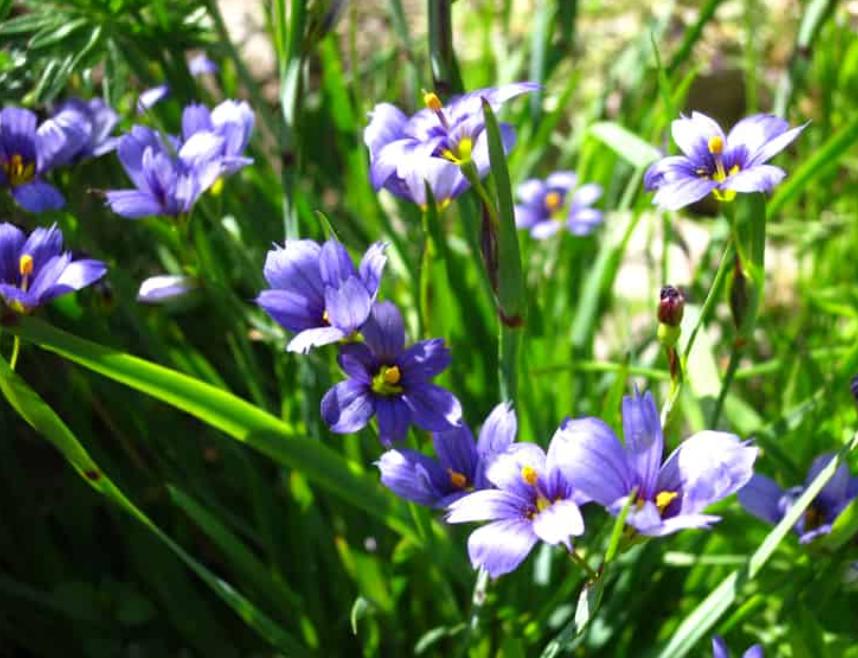
Pros
- Blue-Eyed Grass produces alluring flowers that bloom in spring and summer and enhance natural beauty.
- The flowers of Blue-Eyed Grass attract bees, butterflies, and other pollinators and are a source of nectar for them.
- They are deer-resistant.
- They are drought tolerant.
- Blue-eyed grass is relatively low maintenance and can thrive in various soil conditions.
Cons
- Blue-eyed grass can self-seed and spread rapidly, potentially becoming invasive and outcompeting native plants.
- Blue-eyed grass can sometimes be confused with true grasses, leading to potential misunderstandings.
How to Control
Deadheading regularly is necessary to prevent self-seeding and spreading. It is better to be done before they produce flowers. It can be grown in containers to limit its ability to spread.
In natural areas or wildflower gardens, selectively prune or remove Blue-Eyed Grass plants before they set seeds to prevent their spread.
Blue Flax
This plant’s flowers are small, bright blue to blue, or sometimes rarely white with deep blue in the center. It has 5 spreading petals. The plant has small, narrow, alternate, simple leaves that are sessile on the stem. This is considered as a woody subshrubs in the PLANTS database. This is found in open areas and thrives in well-drained soils. Its growth does well in spring.
| Scientific name | Linum lewisii |
| Family | Linaceae |
| Native | western North America(Arizona,New Mexico,California,Oregon,Nebraska,South Dakota,North Dakota,Kansas) |
| Sun exposure | Full Sun |
| Bloom time | Late Spring |

Pros
- Blue Flax has an attractive appearance with its sky-blue flowers, making it a popular choice for making floral ornaments.
- They are drought tolerant.
- They are low – maintenance.
- The flowers of Blue Flax attract bees and butterflies, contributing to biodiversity and supporting pollination.
Cons
- While not considered highly invasive, Blue Flax can self-seed and spread in favorable conditions.
- They can self-seed, leading to infestation.
How to Control
Deadheading is a must for controlling the immense growth of this plant. When the flower blooms and ripe the seeds are ready to germinate. To limit the parentage just pinch off the flower top before they ripe as seed. Before blooming dig off the hole plant with roots to prevent its growth.
Field Scorpionweed
Field Common uses for scorpionweed include decorative plants, green manure, and cover crops. It is recognized for its fern-like leaves and dense spikes of tiny, bell-shaped blooms that are often purple or blue in color. Commonly found in gardens, fields, and disturbed places, the plant can reach a height of up to 30 to 90 cm.
| Scientific name | Phacelia tanacetifolia |
| Family | Boraginaceae |
| Native | Southwestern United States and Mexico(Michigan,Colorado,Arizona,Illinois,Virginia, Ohio,Georgia) |
| Sun exposure | Full sun |
| Bloom time | Late spring |
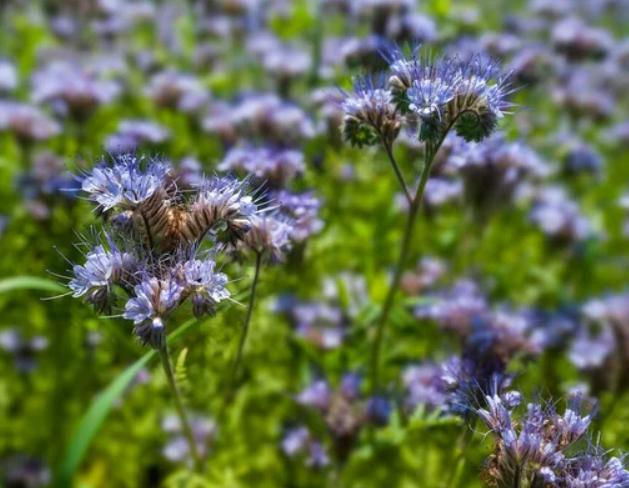
Pros
- Field Scorpionweed is often used as a cover crop to improve soil fertility and structure, enriching the soil with organic matter.
- It is a nectar source for bees and butterflies due to its attractive appearance.
- Field Scorpionweed’s beautiful, bell-shaped flowers are used for an ornamental purpose.
- They are fast-growing plants, providing quick cover and benefits to the soil in a short period.
Cons
- It’s invasive in nature and prevents the growth of other plants.
- Poisonous to livestock is consumed in large quantities.
- It can self-seed leading to unnatural growth.
How to Control
Deadheading is mandatory for the overgrowth of this plant. They only reproduce by seedlings. So, harvesting before the flower is riped so that seeds are not produced. There are also available biological controls such as weevil to prevent the growth of the scorpionweed.
By appreciating and comprehending these blue flower weeds, we may find a balance between their enticing beauty and the requirement for responsible ecological stewardship.

I am the founder of FinalGardening. With over five years of hands-on experience in gardening. I have dedicated myself to sharing my expertise and insights with fellow gardening enthusiasts. I aim to empower you with the information and necessary resources to achieve gardening success.

